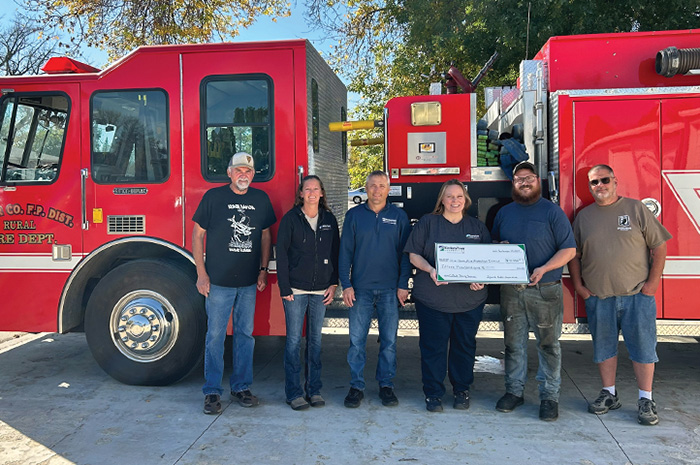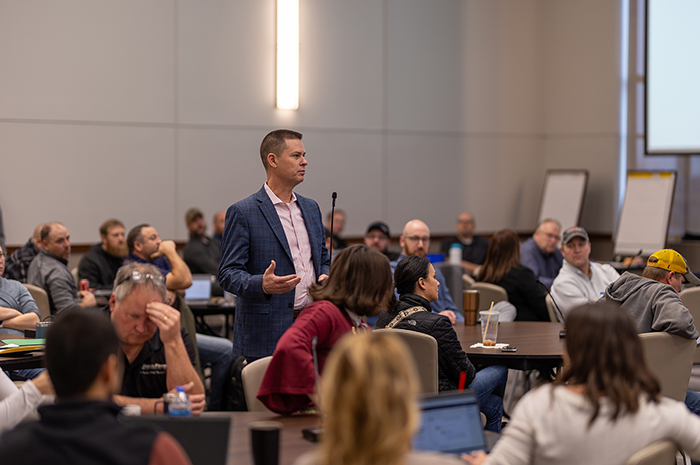Grid operators, regulators forecast reliability risks
The evolving energy transition represents challenges and opportunities for Minnkota and the industry as a whole.
The energy industry is in the midst of one of the most challenging and disruptive periods in its history. As the pace of change continues to accelerate, grid regulators and operators are beginning to identify elevated electric reliability risks.
Rapidly changing energy mixes and extreme weather are among the biggest challenges to reliability according to the 2021 Long-Term Reliability Assessment released by the North American Electric Reliability Corporation (NERC) in December. NERC identified significant reliability risks associated with more intermittent and distributed energy resources and inverter-based resources (IBR) such as wind, solar and battery storage systems.
“The shift to more and more IBR brings unique opportunities but also integration challenges that can and must be addressed to assure continued reliability,” the report concludes. “This is not an argument against the transition but a recognition that, without a collective focus, system reliability faces risk that is inconsistent with electric power’s essentiality to the continent’s economy as well as the health and safety of its population.”
The report finds most regions are projected to have sufficient capacity to meet annual peak demand under normal weather conditions, but extreme events, like a polar vortex or summer heat wave, can create shortfalls, which occurred in Texas in February 2021 and California in summer 2020.
NERC is charged with the security of the bulk power system and sets and enforces reliability standards for utilities. The organization also assesses trends, needs and remedies for grid reliability. It operates under the supervision of the Federal Energy Regulatory Commission.
Minnkota will undergo a NERC audit in the spring to ensure it is meeting cyber and physical security standards that aim to protect the reliability of the grid. These standards are enforced nationwide through recurring audits conducted by eight regional entities. Noncompliance subjects utilities to potential million-dollar fines per day, per violation.
MISO resource mix on the verge of change
From an energy mix standpoint, potential near-term capacity shortfalls may be caused by the retirement of coal-based generation facilities. The Midcontinent Independent System Operator (MISO) region – the energy market where Minnkota operates – could lose 13 gigawatts (GW) of resource capacity from power plant retirements between 2021 and 2024. That’s enough electricity to power about 9.5 million homes.
“The retirement of these traditional resources also accelerates the change in resource mix and punctuates the urgency for implementing resource adequacy and energy sufficiency initiatives in the (MISO) area,” the report said.
MISO released its own Renewable Integration Impact Assessment in February 2021 and highlighted its preparation for an “unprecedented pace of change.” The report concludes that “significant challenges arise” as renewable penetration exceeds 30%.
“We begin to see at above about 30% renewable energy penetration significant stability issues in the grid and significant changes that need to be managed somehow,” said Brian Tulloh, MISO’s Executive Director of External Affairs during the Midwest Energy Summit last summer in Fargo.
“As you get up into the 50% range, those challenges become increasingly more expensive,” he added, emphasizing the importance of time and planning to reach these ambitious goals. North Dakota Public Service Commission Chair Julie Fedorchak estimated the cost of this transition to be $500 billion or more.
While there are challenges on the horizon, it shouldn’t discourage efforts to make our nation’s electric grid as environmentally responsible as possible. But there needs to be recognition that the energy transition must be approached with caution and common sense. Electricity remains essential to our everyday lives – powering homes, hospitals, schools and businesses. If mistakes are made during this transition, they can be extraordinarily difficult to reverse.
Minnkota embraces an all-of-the-above energy strategy that includes coal, wind and hydro. Working together with a robust demand response system, these resources are essential to ensuring electric reliability and resiliency.
...



